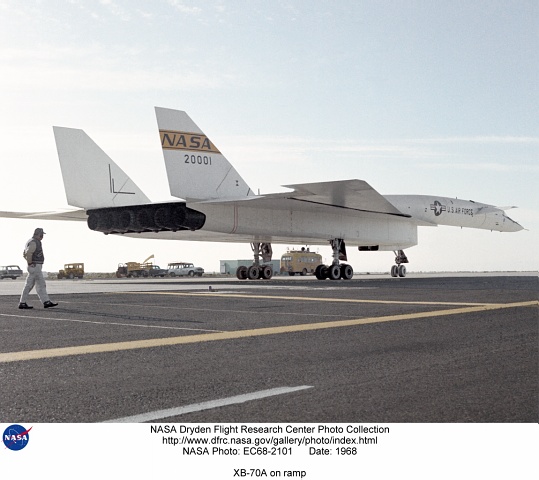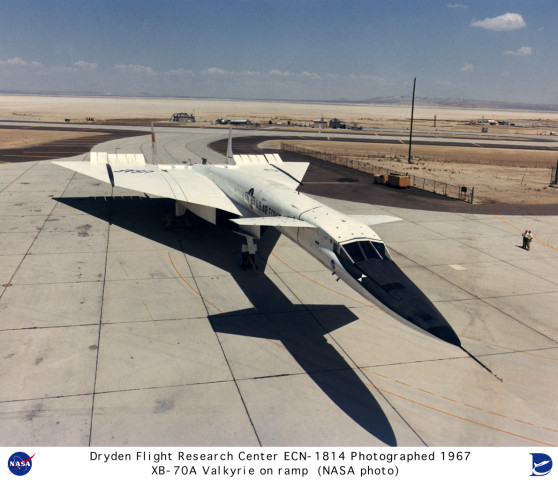Skip to comments.
All Sonic, No Boom (Quiet Supersonic Transport)
Popular Science ^
| Eric Hagerman
Posted on 03/29/2007 8:41:56 PM PDT by TigerLikesRooster
All Sonic, No Boom
Eric Hagerman
For a closer look at the QSST concept inside and out, launch the photo gallery.If you’re ever lucky enough to fly a Quiet Supersonic Transport between New York and Los Angeles, you’ll have just enough time to get through a movie—a short one. Instead of the usual six hours, it will be a 1,100mph, two-hour hop. The QSST, as the proposed luxury private jet is known, could be the first civilian supersonic plane approved for overland routes, thanks to aerodynamics designed to muzzle its sonic boom. Lockheed Martin’s Skunk Works has been developing the project for six years under a $25-million contract from Supersonic Aerospace International (SAI), founded by Michael Paulson, son of Gulfstream founder Allen Paulson. The 12-passenger QSST would fly at between 47,000 and 57,000 feet with a range of 4,600 miles (Chicago to Rome, for example), and it doesn’t need an extended runway. Configured with 12 club chairs, a spacious bathroom and a sweet A/V system, the QSST is aimed at diplomats or executives with plenty of money—but little time—to spare.
Designed to fly between Mach 1.6 and 1.8 (1,056 to 1,188 mph), the two-engine gull-wing aircraft would leave a sonic wake that’s only one hundredth the strength of the Mach 2–capable Concorde, the 100-seat speed demon that wound up permanently grounded following a fatal accident in 2000. (High maintenance costs for the aging fleet and a struggling airline industry also contributed to its demise.)
Eliminating bone-rattling sonic booms is a major feat of aerodynamic hocus-pocus. When an aircraft travels faster than the speed of sound, it creates pressure waves in the air that collide with one another faster than they can dissipate, resulting in a loud crack, or sonic boom. The QSST, though it shares its general shape with the Concorde is less than half the size and uses fine-tuned aerodynamics to control the pressure generated as the plane displaces air at supersonic speeds. With air disturbances along the craft evened out, the QSST generates more shockwaves of smaller magnitude rather than two explosive reports. Tom Hartmann, the program manager at Lockheed, expects the boom to be imperceptible—quieter than a kite flying overhead.
Another key to quiet flight is its broad distribution of lift-generating surfaces. The QSST’s canards—the small wings near the front of the fuselage—and swept-V tail provide substantial lift, preventing the sharp, loud-boom-generating pressure change typical of larger, wider wings. Hartmann says the QSST is so sleek that it can fly 10 percent farther on its fuel supply supersonically than it can at subsonic speeds. “We could easily design a low-sonic-boom aircraft if it didn’t have to fly anywhere,” he says—that is, if the design didn't have to take fuel efficiency into consideration. “The challenge is to fly a long way. The hard part of this was to develop a low-drag design.”
The inverted-V tail also allows the two engines to be mounted far aft— a design feature that further separates the pressure waves and keeps them from crashing into one another. Normally, this engine placement would require extra material to support the cantilevered weight, but the inherent strength of the V tail's truss shape compensates.
The Federal Aviation Administration restricted the Concorde to transoceanic flights because that craft created sonic booms strong enough to rattle dishes on the ground below. Paulson says the QSST will meet the FAA’s stringent new noise regulations, which took effect at the beginning of 2006, and he’s hopeful that the quiet design will prompt a lifting of the ban on overland supersonic flights.
SAI is evaluating engine designs from General Electric, Pratt & Whitney and Rolls-Royce for a unit that produces 33,000 pounds of thrust (on par with a midsize airliner), for 66,000 pounds of total thrust from two engines. Paulson plans to settle on a design in the next year, assemble an international consortium to manufacture the jet, and put it on the market by 2014 for about $80 million. He’d like to roll out a fleet of 300 to 400 in the next 20 years. “The Concorde was a magnificent aircraft,” Paulson says, “but basically, it was 1960s technology. This is an idea whose time is overdue.”
Quiet Supersonic Transport (QSST)
Purpose: High-speed private flights over land and sea
- Manufacturer: Lockheed Martin and Supersonic Aerospace International
- Range: 4,600 miles
- Speed: Mach 1.6 to 1.8 (approx. 1,056 mph to 1,188 mph)
- Dimensions: 132.1 ft. length, 63 ft. wingspan
- Capacity: 12 passengers, 3 crew
- Cost (projected): $2.5 billion development cost; $80 million per aircraft
- First flight (projected): 2011
Eric Hagerman is working on a book about exercise and the brain for Little, Brown.
TOPICS: Business/Economy; Extended News; News/Current Events; Technical
KEYWORDS: boom; qsst; wing
Navigation: use the links below to view more comments.
first 1-20, 21-36 next last
 |
 |
Kris Holland
The QSST's swept wings, forward canards and tail all generate lift, eliminating the need for a larger main wing that would produce sharper pressure spikes |
 |
 |
Courtesy SAI
Form will definitely follow function with the QSST, creating a striking shape for the ultra-fast cruiser. |
 |
 |
Kris Holland
Sonic booms happen when pressure builds up too fast around wings and engines. In a conventional boom, the pressure migrates forward and backward. That movement generates two pressure spikes at the front and rear, creating a classic N-shaped-wave [1], and the result is a loud double bang. |
 |
 |
Kris Holland
To soften the boom, QSST aerodynamicists sought to spread out the pressure points along the fuselage. The new aircraft [above] generates only moderate shocks at the nose [2] and tail [3] with no spike in the middle. The stretched nose creates a small but distinct pressure spike at the front, as does the rear engine placement. These two small spikes counter the tendency of the wave to travel forward and backward. By the time the sound reaches the ground [4], the N-wave has diffused into a barely audible poof. |
 |
 |
Courtesy SAI
Careful aerodynamic shaping stretches the pressure wave that causes sonic booms along the length of the aircraft, effectively converting the loud double bang into a more muffled poof. |
To: AntiGuv; neverdem
QSST Ping!
 |
|
|
| Sophisticated aerodynamic shaping muffles eardrum-blistering sonic booms, permitting the QSST to fly over land at supersonic speed. |
2
posted on
03/29/2007 8:44:31 PM PDT
by
TigerLikesRooster
(kim jong-il, kae jong-il, chia head, pogri, midget sh*tbag)
To: TigerLikesRooster
Really interesting! I guess some of how they'd do this is making sure the wings are swept back at a precise angle, too. I'm learning about this, but I'd love to learn more about how this works.
To: TigerLikesRooster; TommyDale; Gamecock; Alex Murphy; Cyrano; GOPPachyderm; Sue Perkick; blackie; ...
effectively converting the loud double bang into a more muffled poof. POOF!? But that sounds so... effeminate!
:-)
Anyone wanna take bets as to how long until one of these gets on Benny HInn or Joel Osteen (or some other charlatan preacher)'s shopping/asset list?
4
posted on
03/29/2007 8:48:27 PM PDT
by
Terriergal
("I am ashamed that women are so simple To offer war where they should kneel for peace," Shakespeare)
To: TigerLikesRooster
The technology better work extremely well, because it's quite ugly.
5
posted on
03/29/2007 9:07:55 PM PDT
by
Moonman62
(The issue of whether cheap labor makes America great should have been settled by the Civil War.)
To: Terriergal
well, those flying on the "POOF" aircraft will be dubbed poofters.
6
posted on
03/29/2007 9:20:13 PM PDT
by
GSlob
To: Moonman62
As opposed to beautiful technology...


7
posted on
03/29/2007 9:25:58 PM PDT
by
Sundog
(We are all counting down the days.)
To: Sundog
8
posted on
03/29/2007 9:28:26 PM PDT
by
Moonman62
(The issue of whether cheap labor makes America great should have been settled by the Civil War.)
To: TigerLikesRooster
Instead of the usual six hours, it will be a 1,100mph, two-hour hop. It's all a plot to keep from serving meals on all domestic flights.
9
posted on
03/29/2007 9:32:47 PM PDT
by
glorgau
To: TigerLikesRooster
I clearly deserve to have one of these...
10
posted on
03/29/2007 9:33:48 PM PDT
by
null and void
(To Marines, male bonding happens in Boot Camp, to Democrats, it happens at a Gay Pride parade...)
To: TigerLikesRooster
I'm sure Al Gore has one on order.
But its ok because he will be able to get to more carbon offsets selling seminars per day thus claming his carbon footprint is smaller.....or whatever..........
11
posted on
03/29/2007 9:52:21 PM PDT
by
Proud_USA_Republican
(We're going to take things away from you on behalf of the common good. - Hillary Clinton)
To: TigerLikesRooster
I think the interest in the QSST comes from companies selling fractional share ownership of executive jets such as NetJets. Such a company could own as many as 80-90 QSST's for corporate travel between Europe and the US East Coast--and unlike the Concorde, the QSST will offer longer range and the ability to operate out airports with tighter noise restrictions.
To: TigerLikesRooster
it is good that we are better than the french at everything... wine, cheese, supersonic aircraft...
13
posted on
03/29/2007 10:01:29 PM PDT
by
Porterville
(Bullies love Peace and the Peaceful fight Wars.)
To: TigerLikesRooster
I would love to see this fly out of Mineta International.
14
posted on
03/29/2007 10:11:07 PM PDT
by
tanuki
To: tanuki
I would love to not call it Mineta.
15
posted on
03/29/2007 10:14:53 PM PDT
by
null and void
(To Marines, male bonding happens in Boot Camp, to Democrats, it happens at a Gay Pride parade...)
To: Sundog
To: TigerLikesRooster
17
posted on
03/29/2007 11:08:33 PM PDT
by
hattend
(Two thirds of the world is covered by water, the other third is covered by Champ Bailey - Go Broncos)
To: null and void
Yeah, me neither. Love your tagline.
18
posted on
03/29/2007 11:16:13 PM PDT
by
tanuki
To: TigerLikesRooster
I want one for Christmas!

There could also be military applications in the design for rapid troop deployment, as well.
19
posted on
03/29/2007 11:26:22 PM PDT
by
WestVirginiaRebel
("...Mindless pack of trained Maoist circus seals."-www.iowahwk.typepad.com)
To: Moonman62
Ugliness -- like beauty -- is in the eye of the beholder. I like its looks...
20
posted on
03/30/2007 4:30:50 AM PDT
by
TXnMA
("Allah": Satan's current alias...)
Navigation: use the links below to view more comments.
first 1-20, 21-36 next last
Disclaimer:
Opinions posted on Free Republic are those of the individual
posters and do not necessarily represent the opinion of Free Republic or its
management. All materials posted herein are protected by copyright law and the
exemption for fair use of copyrighted works.
FreeRepublic.com is powered by software copyright 2000-2008 John Robinson


![]()






